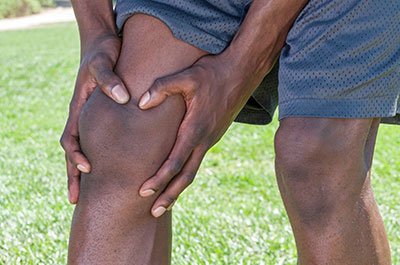Leg cramps are common and happen for many different reasons. And in most cases, they aren’t a sign of anything very serious. But for some people they may be a warning sign of peripheral artery disease.
“There are lots of reasons why people get leg cramps—including muscle soreness and dehydration,” says Kevin Onofrey, M.D., a vascular surgeon at Henry Ford Health. “But leg cramps related to peripheral artery disease happen in the same way each time you exert yourself.”
What is Peripheral Artery Disease (PAD)?
Peripheral artery disease (PAD) is a common circulatory problem that affects many people, especially as they get older. In the U.S., more than 8 million people over 40 suffer from the condition.
PAD typically develops when people also have atherosclerosis. “With atherosclerosis, fatty deposits build up in the arteries, which restricts blood flow,” says Dr. Onofrey. In addition to atherosclerosis, other risk factors for PAD include:
- Being African American
- Diabetes
- A family history of PAD
- High blood pressure
- High cholesterol
- Smoking (people who smoke are four times more likely to develop PAD than nonsmokers)
Why Does PAD Cause Leg Cramps While Walking?
“Peripheral artery disease causes narrowing or blockage of blood vessels—particularly those in the legs and feet,” says Dr. Onofrey. “That restriction in blood flow can lead to various symptoms, one of the most noticeable being leg cramps during physical activities like walking.”
Dr. Onofrey describes the blood vessels in the body like an expressway in a city. When any of those main highways shut down, all the traffic has to reroute to smaller roads. “The blood can take these smaller vessels to get where it needs to go,” he says. “But when your muscles are demanding more oxygen—like during exercise—those smaller vessels aren’t enough to meet your body’s needs.”
Without enough blood and oxygen, the leg muscles produce more lactic acid. Lactic acid buildup leads to muscle cramping and pain. “Those leg cramps act as a warning sign,” says Dr. Onofrey. “They indicate that the muscles are not receiving enough blood flow to sustain your level of activity.”
When To See A Doctor About Leg Cramps

Vascular Care At Henry Ford
It’s important not to ignore leg cramps—especially if you’re experiencing them on a regular basis. They may not be related to PAD, but if they are, prompt diagnosis and treatment are critical.
While it’s worth having a doctor evaluate any type of leg cramps, those related to PAD share specific features. “They are consistent and reproducible,” says Dr. Onofrey. In other words, the cramps will typically happen every time you walk a certain distance or for a specific amount of time. “They don’t come and go and they usually go away as soon as you stop being active,” he says.
Your doctor may use a test called the ankle brachial index (ABI) to determine if you have peripheral artery disease. ABI uses a combination of ultrasound and blood pressure monitoring to assess blood flow in your legs.
How To Manage Leg Cramps Caused By PAD
Activity triggers leg cramps related to peripheral artery disease. And rest typically relieves them. So it’s easy to assume that if you have PAD and are prone to activity-related leg cramps, you shouldn’t be exercising.
Turns out, that’s exactly the wrong approach. “The cramps are your body’s way of saying it’s maxed out its ability to move blood to your muscles,” says Dr. Onofrey. “But as you keep moving, your body finds ways to move more blood and that improves your exercise tolerance.”
Medication is another tool to manage PAD and its symptoms. Your doctor may prescribe blood thinners, statins (to decrease cholesterol) or vasodilators (to open veins and improve blood flow). In severe cases, a doctor may recommend surgery to improve blood flow.
“Timely intervention and lifestyle changes can significantly improve the quality of life for people affected by PAD,” says Dr. Onofrey. “That’s why early diagnosis and effective management are so essential.”
Reviewed by Dr. Kevin Onofrey, a vascular surgeon who sees patients at Henry Ford Hospital and Henry Ford West Bloomfield Hospital.



